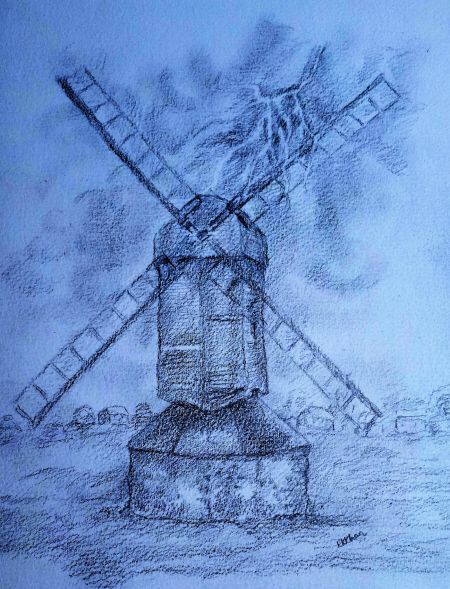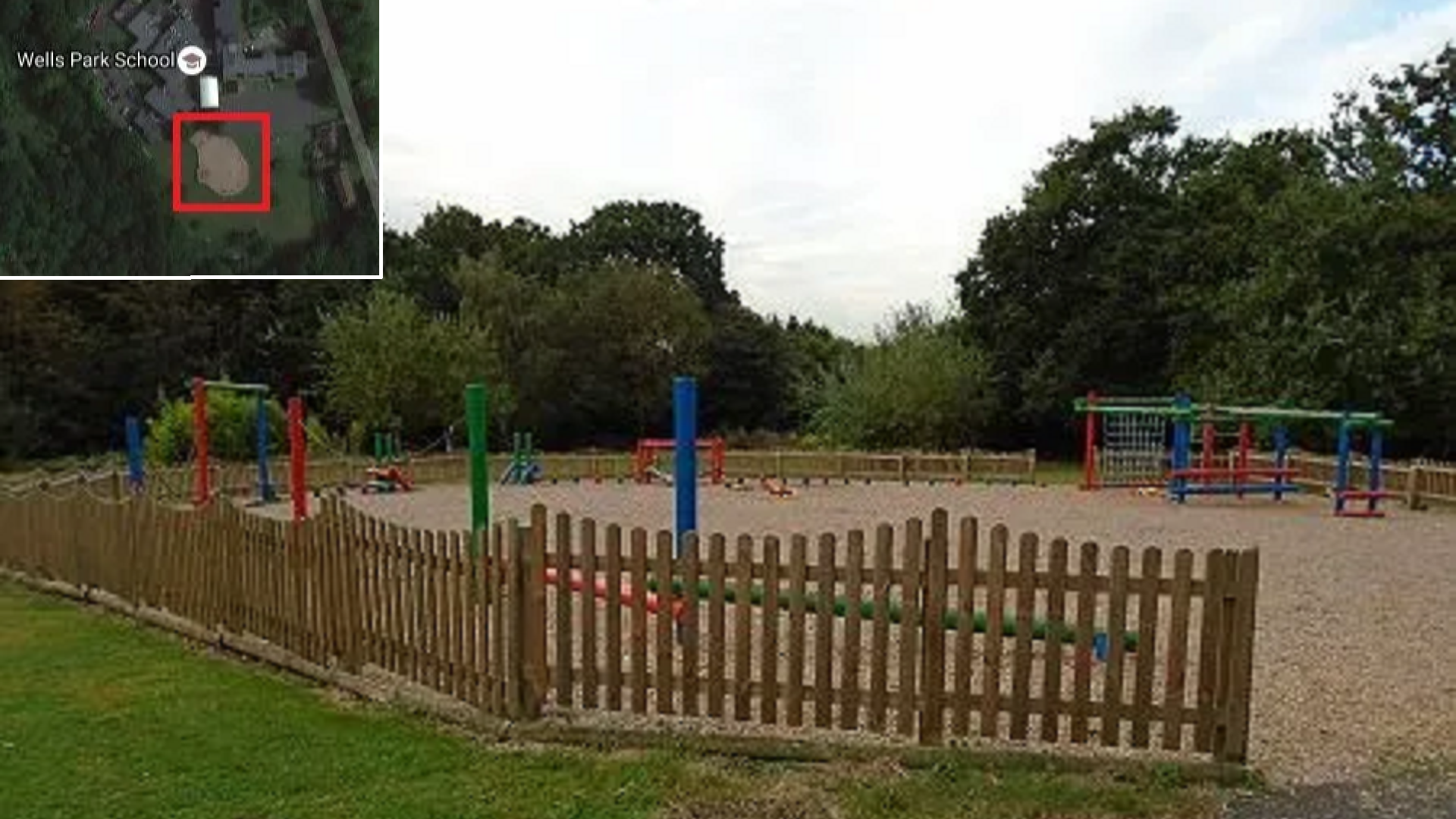HISTORY OF CHIGWELL ROW
CHIGWELL ROW WINDMILL

"A large body of electric fluid struck the vane". Illustration by Rosemarie Khan
From its prominent position Chigwell Row windmill could be seen breaking the skyline over twenty miles away. Windmills were one of the earliest inventions to harness energy by using the forces of nature. They existed before the 12th century. Popularity increased and it became rare for a village not to have one. Early mills in England were usually owned by the Lord of the Manor, but by the 18th century nearly 200 were in private ownership throughout Essex. They were normally placed on high ground to take full advantage of the wind. Initially windmills were used for milling grain for food production. Later they pumped water and produced electricity.
Sir Robert Wroth built the first mill in Chigwell Row around 1610. It was occupied by miller John Brand who passed away in 1665. The mill was replaced about 1768 and put up for sale. The leasehold for the windmill, dwelling house, outbuildings, five acres of meadow and commonage rights for over 500 acres, was subject to an annual rent of £20. William Mason held the lease until about 1828 when George Packham took occupancy. The final occupier Thomas Halls began tenancy in 1836.
Being at high altitude had its dangers as events proved when a fierce thunderstorm darkened Chigwell Row. Lightning struck the mill and for several seconds the structure shook at its foundations; one of the sails broke off and got flung some distance, and the upper part burst into flames. Most villagers were already awake as thunder raged overhead and were quick to act. Messengers galloped on horseback to fetch engines from Chigwell and Romford. Engines arrived, but assessing the mill couldn't be saved, the firemen concentrated their efforts on outhouses. Shortly afterwards millstones and machinery gave way and the building collapsed with a tremendous crash.
The Morning Advertiser reported on 1st August 1842: "EFFECTS OF THE LATE THUNDER STORM.-DESTRUCTION OF A WINDMILL BY THE ELECTRIC FLUID-On Thursday morning last, at half-past four o'clock, during the prevalence of the violent thunder-storm, a large body of electric fluid struck the vane of a windmill in Chigwell-row, Essex, belonging to Mr. James Halls, and descended to the interior of the building and set the place in flames. Mr. Clarke, a gentleman, residing in Chapel-house, Chigwell-row, observing the lightning strike the building, and apprehensive of the consequences which would result, immediately proceeded to the dwelling house of Mr. Halls, which is situated a short distance from the mill, and gave an alarm. By the time Mr. Halls had partially dressed himself the interior of the mill was on fire and the flames bursting forth from the windows, so that all hope to save the stock, machinery was fruitless. The interior of the building was totally destroyed. The damage done, including stock, machinery, etc. is about £1000. On the same morning injuries were done by the electric fluid to various houses and buildings in the vicinity of Ilford, Woodford, and Walthamstow, but nothing of so serious an amount as that done to the property of Mr. Halls."

1844 Ordnance Survey map showing the Mill
It can be difficult to determine the age of a mill. Construction records were rarely kept. On occasion mills got blown down or caught fire. When this occurred another mill often got built in the same position using timber salvaged from the debris of the previous mill. A date carved on a beam of an old mill could later appear in a newer mill. This means that the discovery of a date in a mill does not necessarily reflect the true age of the building. Likewise, windmills on maps only indicate that a mill existed when the map was drawn. A windmill shown in the same position a few years later may not be the same one.

Wells Park School play area where a windmill once stood. The overhead view on Google Maps is quite revealing.
The Environs of London pt.1.(1811) wrote: "There is a spring near the windmill at Chigwell Row, of a cathartic quality; the water of which was recommended by the celebrated physician Dr. Frewen, who was a native of this parish."
The Well that Chigwell Row is reputedly named after was located near Tylney Close just beyond the School's boundary fence to the south.
Written by Raymond Small, with thanks to researcher Elaine Wiltshire and illustrator Rosemarie Khan. Thank you also to Deputy Head, Paul Johnson, for permission to visit Wells Park School.
© hainaultforest.net. All rights reserved.

